Sam Goudsmit: Physics, Editor, and More
FHP Session at the APS 2010 March Meeting
By Dwight E. Neuenschwander
On Monday, 15 March at the APS March meeting for 2010, following the Pais Prize lecture, “Henry Cavendish and John Michell: Weighing the Stars” by Russell McCormmach, the session changed gears to become a celebration of the life and work of Samuel Goudsmit (Fig. 1). That part of the session, called “Sam Goudsmit: Physics, Editor, and More” featured talks by Goudsmit’s daughter, Esther Goudsmit, and four others who covered different aspects of his life.
The first speaker was Esther Goudsmit of Oakland University in Rochester, Michigan (Figs. 2, 3). Her talk was entitled “Samuel Goudsmit— Early Influences.” She was followed by Jonothan Logan (EPG Research Foundation, NY, Fig. 4) with “A Keen Eye for Clues,” then Benjamin Bederson (New York University, Fig. 5) who presented “Sam Goudsmit—His Physics and His Statesmanship;” and Peter M. Levy (New York University, Fig. 6) who spoke on “Electron Spin from Goudsmit and Uhlenbeck to Spintronics.” Martin Blume (APS) was invited to present the final talk of the session. However, he was unable to reach the meeting because of a serious snowstorm. At literally the last minute, Daniel Kleppner (MIT) assembled a substitute talk called “Sam, Brookhaven, and the Physical Review” (Fig. 7).
Samuel Abraham Goudsmit was born on 11 July 1902 in The Hague, Netherlands. Esther Goudsmit described how he was the first member of his large extended family to be educated beyond high school. Educated in Amsterdam and Leiden, in 1927 Goudsmit earned the PhD in physics at the University of Leiden (Fig. 8). While there, in 1925 he and George Uhlenbeck, both students of Paul Ehernfest, postulated electron spin to explain the atomic spectra of gases.[1]
Logan described Goudsmit as a pioneering atomic theorist who specialized in the “exacting, quantitative art of interpreting line spectra.” In addition to co-discovering electron spin, Goudsmit also “contributed key studies of nuclear moments, neutron scattering, and the statistics of experimental measurement.” These contributions include two books on atomic spectra: In 1930 The Structure of Line Spectra that Goudsmit co-authored with Linus Pauling, and Atomic Energy States in 1932 with Robert F. Bacher. After completing his degree in Holland, Goudsmit continued his career at the University of Michigan. He held a position there from 1927 through 1946, although he spent part of WWII at the Massachusetts Institute of Technology working on radar.
Esther Goudsmit’s talk focused on her father’s “significant and diverse contributions in several realms including not only physics but also teaching, Egyptology, and scientific intelligence.” This theme was echoed by Logan who described how Goudsmit was “drawn to a wider world of inquiry—to museums and archeological sites in Cairo as a respected amateur Egyptologist; to the MIT Radiation Lab early in WWII; and to the briefing rooms of British pilots, analyzing the effectiveness of radar; and across wartime Europe by jeep…”
As a respected Egyptologist, Goudsmit published numerous articles on Egyptian archeology.[2] The Kelsey Museum of Archaeology at the University of Michigan-Ann Arbor houses the Samuel A. Goudsmit Collection of Egyptian Antiquities.[3] The Goudsmit Collection includes cuneiform tablets. Such tablets range in dates from about 2300 BCE to roughly 240 BCE.[4]
Bederson discussed details of Goudsmit’s scientific career, which began in 1921 with the publication of a paper on atomic spectroscopic doublets, when Goudsmit was 19 years old. This work was a precursor of the Uhlenbeck and Goudsmit spin paper of 1925.[1] In 1926 Goudsmit was already tackling nuclear spins, whose values could be inferred from precision spectroscopic measurements. Soon thereafter he expanded such analyses to determining nuclear magnetic moments, eventually moving on to nuclear diffraction and interference. While at the Radiation Lab at MIT, before his appointment to Alsos, Goudsmit worked on the critical problem of short wavelength radar sources and their use in the Battle of Britain.
Goudsmit was appointed head of the Alsos mission (a part of the Manhattan Project) whose aim was to collect evidence as the Allies swept across Germany, to assess the progress and effectiveness of the Nazi atomic bomb project (Figs. 9, 10, 11). Typically Goudsmit’s team would visit German project sites with Allied troops, although sometimes Alsos preceded the troops. As Goudsmit described in the 1947 book Alsos, the Axis powers had never come close to building a nuclear bomb. Bederson noted, “Partly because of his service as scientific leader of the Alsos project at the end of WWII he became a leading statesman of science.”
After the war Goudsmit was briefly a professor at Northwestern University. In 1948 he went to Brookhaven National Laboratory, where he remained until 1970 (Fig. 12), serving as chair of the department during 1952-1960. During that time Goudsmit became Editorin- Chief of Physical Review where, as Logan expressed it, Goudsmit also “created the ambitious new journal, Physical Review Letters.” Kleppner described Goudsmit’s original vision for Physical Review Letters, his ongoing fight for clarity, and his war against neologisms, acronyms, and other stylistic barbarities. Kleppner quoted some of Goudsmit’s cautions about good manners, and described his failing battle for brevity, that terminated only when the page length had crept from one to four.
Goudsmit also reached out to the general public on behalf of science literacy. For instance, in 1966 he and Robert Clairborne authored the volume Time for the Time-Life Science Library Series.
Logan, who was Goudsmit’s assistant at Physical Review 40 years ago, saw a common element in Goudsmit’s diversity of interests: his “abiding delight in solving puzzles of every kind, coupled with a detective’s keen eye for clues.”
Peter Levy described how electron spin “was adopted in a very different setting a decade later to explain the unusual physical and electrical transport properties of ferromagnetic metals.” That work led by 1988 to the control of currents through the spin of the electron, or “spintronics.” Levy traced the origins of the field back to Nevill Mott’s work of the 1930s, using electron spin in two-current models of conduction in the 3d transition in ferromagnetic metals. Levy’s story continued through contemporary interest focused on spin-dependent transport in oxides and carbon-based materials.
Sam Goudsmit and George Uhlenbeck shared the 1964 Max Planck Medal and were awarded the National Medal of Science in 1976 (Fig. 13). Goudsmit retired in 1974 and became a member of the faculty at the University of Nevada-Reno. He passed away in Reno on 4 December 1978.
[1] G.E. Uhlenbeck and S. Goudsmit, Naturwissenschaften 47 (1925) 953.
[2] Goudsmit’s publications in Egyptology include articles in Expedition ( Summer 1972), 13-16; American Journal of Archaeology 78 (1974) 78; Journal of Near Eastern Studies 40 (1981) 43-46.
[3] Margaret Cool Root, The Samuel A. Goudsmit Collection of Egyptian Antiquities: A Scientist Views the Past, Exhibition of the Kelsey Museum of Archaeology, January 30-May 9, 1983, The University of Michigan, Ann Arbor; and an exhibition catalog by the same title, Kelsey Museum of Archeology (1984).
[4] See http://cdli.ucla.edu/collections/kelsey/kelsey_ intro.html.

Photograph by Heka Davis, courtesy AIP Emilio Segrè Visual Archives.
Fig. 1. Samuel Goudsmit
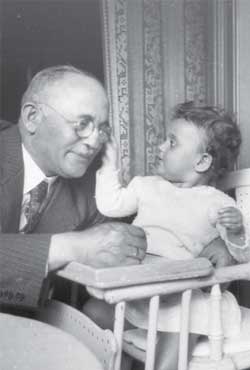
Credit: Photograph by Samuel Goudsmit, courtesy AIP Emilio Segrè Visual Archives, Goudsmit Collection.
Fig. 2. Samuel Goudsmit's father and daughter Esther, 1935.
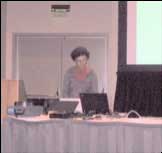
Fig. 3. Esther Goudsmit, daughter of Sam Goudsmit, presenting her talk entitled “Samuel Goudsmit – Early Influences” at the APS March Meeting in Portland, Oregon, at the Convention Center, March 15 2010.
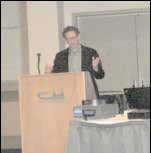
Fig. 4. Jonothan Logan presenting “A Keen Eye for Clues.”
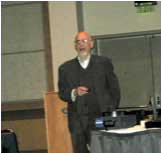
Fig. 5. Benjamin Bederson presenting “Sam Goudsmit – His Physics and His Statemanship.”
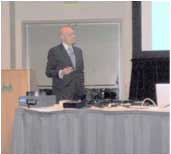
Fig. 6. Peter Levy presenting “Electron Spin from Goudsmit and Uhlenbeck to Spintronics.”

Fig. 7. Daniel Kleppner presenting “Sam, Brookhaven, and the Physical Review.”
Photo by George Zimmerman.
 Credit: AIP Emilio Segrè Visual Archives.
Credit: AIP Emilio Segrè Visual Archives.
Fig. 8. L-R: Oskar Klein, George Uhlenbeck, Samuel Goudsmit, University of Leiden, summer 1926.

Credit: AIP Emilio Segrè Visual Archives
Fig. 9. Goudsmit driving a jeep in Stadtilm, Germany, 16 April 1945, on the Alsos Mission (with Lt. Toepel).

Credit: AIP Emilio Segrè Visual Archives, Goudsmit Collection. Fig. 10. Haigerloch pile being dismantled as part of the Alsos mission, Haigerloch, Germany (date unknown).
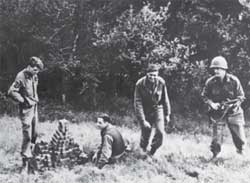
Credit: Photo by Samuel Goudsmit, courtesy AIP Emilio Segrè Visual Archives, Goudsmit Collection.
Fig. 11. Alsos Intelligence officers have located the hidden hoard of German uranium cubes in Haigerloch, southern Germany (date unknown). Samuel Goudsmit is third from left.

Credit: AIP Emilio Segrè Visual Archives, Goudsmit Collection.
Fig. 12. Light and Quanta lectures, Christmas at Rockefeller Institute, 1963.

Credit: The White House, courtesy AIP Emilio Segrè Visual Archives.
Fig. 13. Presentation of the National Medal of Science award at the White House. George Uhlenbeck is at the right end of the line (about to shake hands with President Carter). Fourth from his right is Samuel Goudsmit. November 22, 1977
Note Added: This article represents the views of the author, which are not necessarily those of the FHP or APS.
